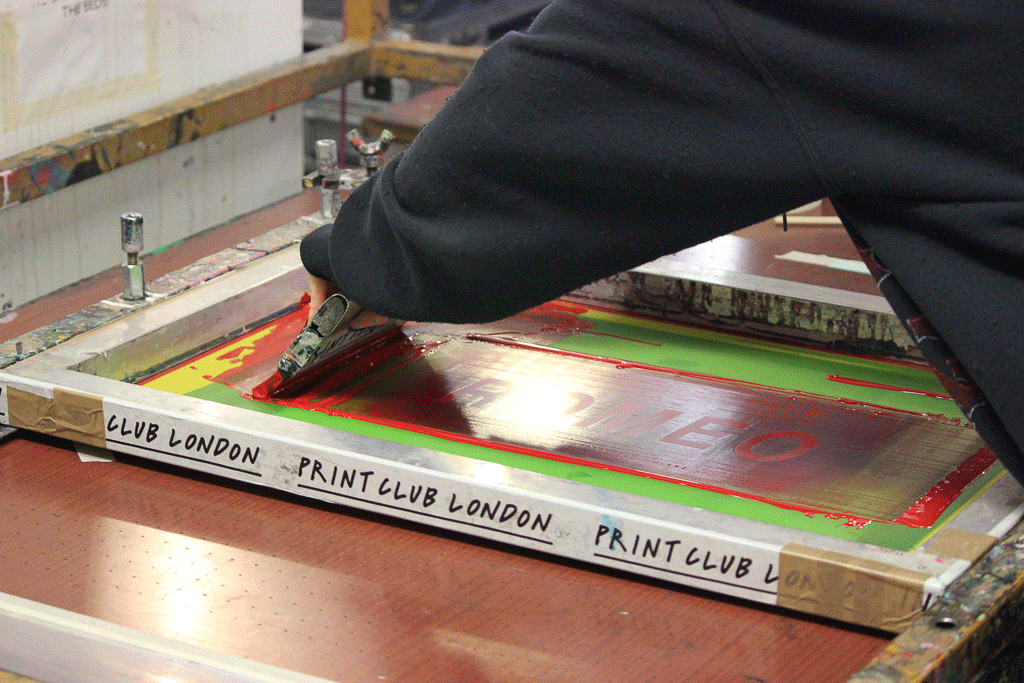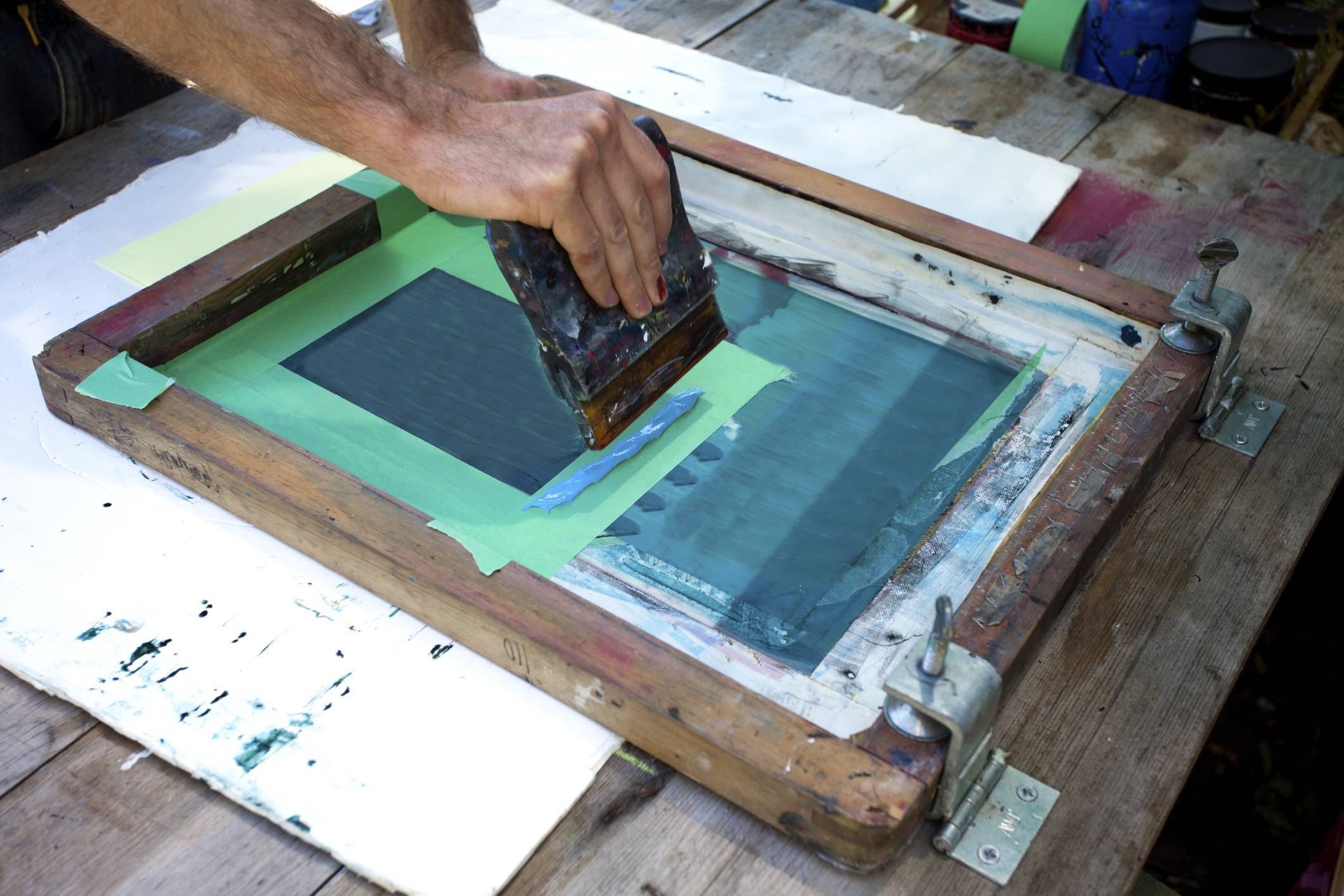ChatGPT said: 10:9 Design near me: how to choose the best screen printing services locally
The Essential Overview to Recognizing Screen Printing and Its Versatile Utilizes
Screen printing has an abundant background that goes back to ancient times, progressing into an advanced strategy made use of across numerous markets today. This guide checks out the intricacies of the screen printing process, outlining its applications in fashion, home, and marketing decoration - 10:9 Design Screen Printing. Understanding these principles can open creative potential for both artistic and commercial tasks. The complying with areas will certainly disclose vital ideas and methods to boost one's screen printing endeavors
The History of Screen Printing
Although screen printing has roots that trace back centuries, its development shows the artistic and technological developments of different cultures. Coming from ancient China, the strategy was originally made use of for enhancing fabrics and later infect Japan, where it became integral to Ukiyo-e woodblock printing. The method moved to Europe in the 18th century, where it gained appeal among artisans and commercial printers. The invention of image solution in the 20th century changed screen printing, enabling for even more detailed designs and better effectiveness. Musicians like Andy Warhol additionally pushed its popularity, making use of the medium to produce iconic jobs that mixed commercialism and great art. By the late 20th century, screen printing had developed itself as a versatile strategy, utilized in style, advertising and marketing, and fine art. Today, it continues to develop, incorporating digital innovation and expanding its applications throughout numerous markets.
The Screen Printing Refine Explained
Screen printing transforms imaginative visions into tangible layouts via a series of exact actions. A photo is produced and then moved onto a screen, commonly made of fine mesh fabric extended over a structure. A light-sensitive emulsion is related to the screen, which is exposed to light, solidifying in locations not covered by the image. After rinsing the unhardened emulsion, a pattern is developed.
Next off, the screen is positioned over the substratum, whether it be textile, paper, or another material. Ink is then pushed with the open locations of the stencil utilizing a squeegee, depositing the style onto the substrate below. This process can be repeated for numerous colors, requiring separate screens for every color. Ultimately, the published thing is healed making use of warmth to assure the ink adheres appropriately, causing a durable, vibrant design on-line.
Sorts Of Screen Printing Techniques

Additionally, specialized methods, such as discharge screen printing, remove dye from the fabric to develop softer prints, while foil screen printing applies metal foil to attain a shiny surface (10:9 Design reviews). Each method offers distinctive features, satisfying different creative demands and production ranges, eventually expanding the opportunities within the screen printing domain
Applications of Screen Printing in Numerous Industries

Additionally, the signs and marketing fields make use of screen printing for creating distinctive displays and banners. This technique allows for bold colors and complex layouts that record attention. In electronics, screen printing is employed for applying conductive inks to circuit card, essential for component connections. The home style industry accepts screen printing to create distinctive styles on fabrics and wall art. Generally, screen printing works as an important tool across varied fields, improving items with customized and aesthetically enticing graphics.
Tips for Successful Screen Printing Projects
While embarking on a screen printing job, mindful interest to information can substantially boost the last end result. Selecting top quality materials is important; this includes the screen, inks, and substratums. Using appropriate mesh matters can influence ink deposition and information resolution. Preparation is equally important; extensive cleansing of displays and appropriate exposure times ensure crisp prints.
Next, exact registration is crucial for multi-color prints. Utilizing positioning tools can help accomplish exact layering. Additionally, screening prints on scrap materials before production assists determine prospective problems without wasting sources.

Often Asked Questions
What Materials Are Ideal for Screen Printing on Material?
Cotton and polyester blends are ideal for screen printing on textile due to their longevity and ink absorption. Furthermore, specialized fabrics like silk or canvas can generate distinct appearances and finishes, improving the overall style quality.
Exactly how Do I Clean and Maintain Screen Printing Devices?
To cleanse and preserve screen printing tools, one must frequently clean screens with proper website solvents, check mops for wear, lube relocating parts, and store all items in a completely dry, dust-free environment to extend their life-span.
What Are the Environmental Impacts of Screen Printing?
Screen printing can have considerable environmental effects, including chemical waste from solvents and inks, water use throughout cleaning processes, and energy usage. Green products and lasting techniques are crucial for reducing these unfavorable results.
Can Screen Printing Be Done in the house Successfully?
Screen printing can be efficiently done at home with the best materials and techniques. Hobbyists can create quality prints, though success depends upon their skill level, equipment, and understanding of the process included.
What Are the Expenses Linked With Beginning a Screen Printing Company?

Starting a screen printing business entails expenses for tools, products, and work space. Initial expenditures commonly range from a couple of hundred to a number of thousand bucks, relying on the scale, high quality of machinery, and preferred manufacturing capability.
Screen printing has an abundant background that dates back to ancient times, evolving right into a sophisticated method used throughout different industries today. An additional technique, rotary screen printing, uses cylindrical displays, helping with continual printing on fabric rolls, therefore enhancing effectiveness for large productions. Furthermore, specialized techniques, such as discharge screen printing, eliminate dye from the material to produce softer prints, while foil screen printing uses metallic foil to accomplish a shiny coating. In the fashion sector, screen printing is widely used to produce dynamic layouts on garments, enabling brands to display their unique styles. Cotton and polyester blends are suitable for screen printing on fabric due to their sturdiness and ink absorption.